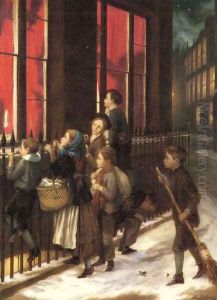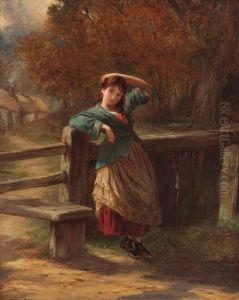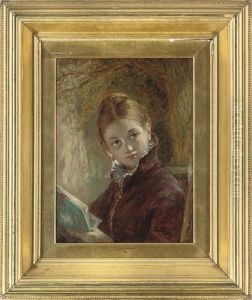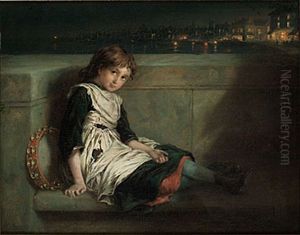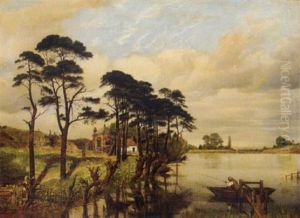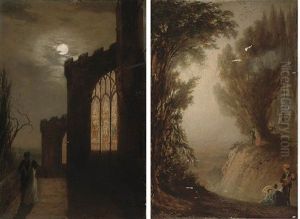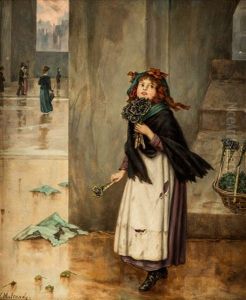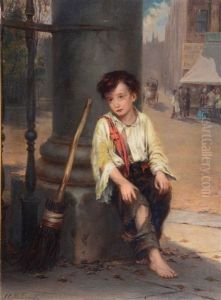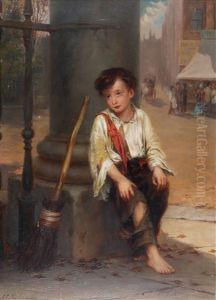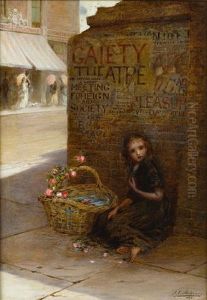Augustus Edwin Mulready Paintings
Augustus Edwin Mulready was a notable British painter born in London in 1844. He hailed from an artistic lineage, being the grandson of the celebrated genre artist William Mulready, a connection that no doubt influenced his artistic path. Mulready's Victorian era upbringing and artistic education were steeped in the rich cultural milieu of 19th-century London, a period that saw a burgeoning interest in genre painting and the depiction of everyday life. This societal backdrop, coupled with his family's artistic legacy, played a pivotal role in shaping his career and thematic focus.
Mulready specialized in genre painting, a style that portrays scenes of everyday life and ordinary people, often imbued with a narrative quality. His works are characterized by their detailed depiction of Victorian society, with a particular emphasis on the lives of the poor and the urban underprivileged. This thematic concern was not uncommon among Victorian artists, who were frequently moved by the stark realities of life in industrial London. Mulready's paintings, however, stand out for their empathetic portrayal of his subjects, often children, and their circumstances, rendered with a realism that is both poignant and dignified.
Despite the prominence of his grandfather, Mulready carved out his own niche in the British art world. His works were exhibited at prestigious venues such as the Royal Academy and the British Institution, helping to cement his reputation as a skilled and compassionate observer of the human condition. Throughout his career, Mulready remained committed to his genre, reflecting the social concerns of his time through his art. He passed away in 1904, leaving behind a body of work that continues to be appreciated for its artistic quality and its sensitive portrayal of Victorian society.



